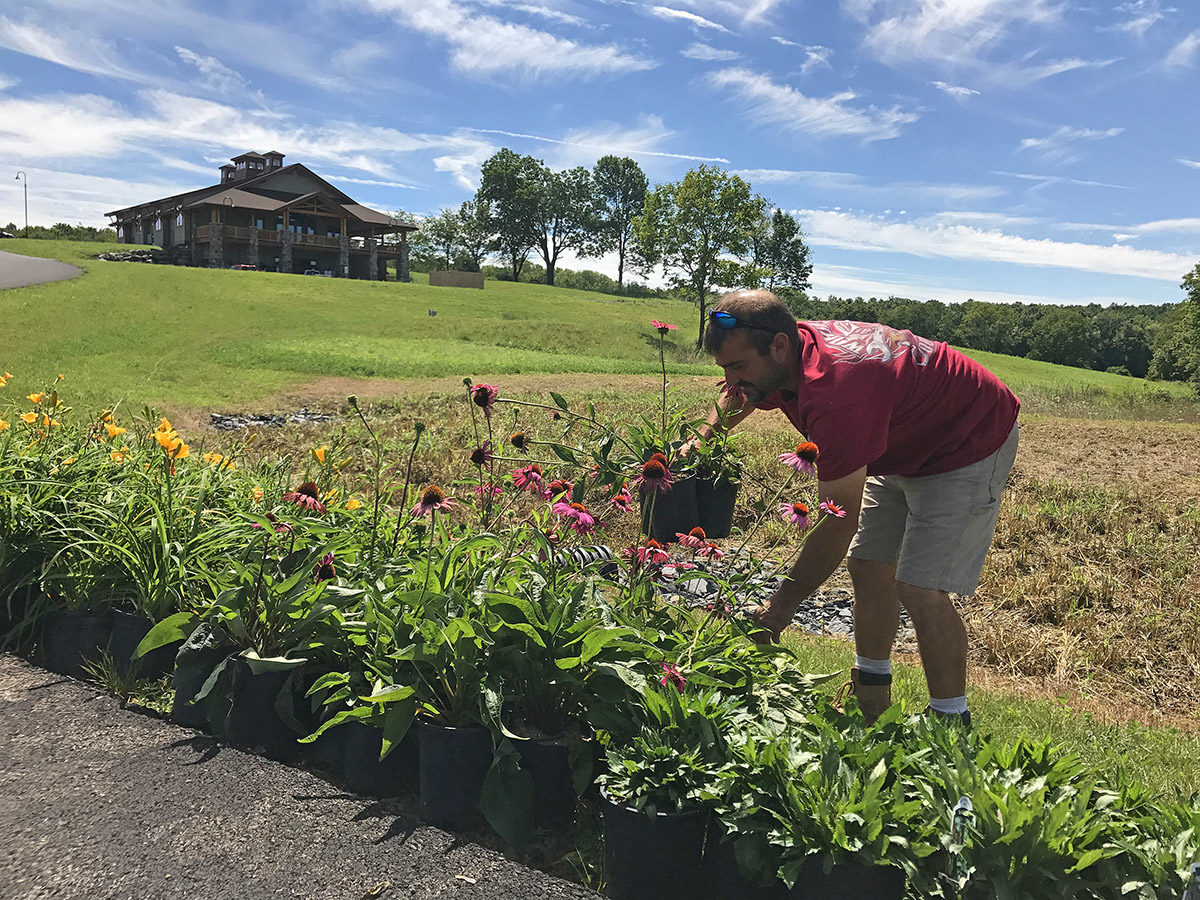Planting a Rain Garden in the Poconos
Mountain View Vineyard Continues Sustainability Efforts
The new gardens at the winery entrance are no ordinary gardens. They are rain gardens! As gardeners planted last week, so many guests asked us, “What is a rain garden? What is it for? Why is it important?” We love your curiosity!
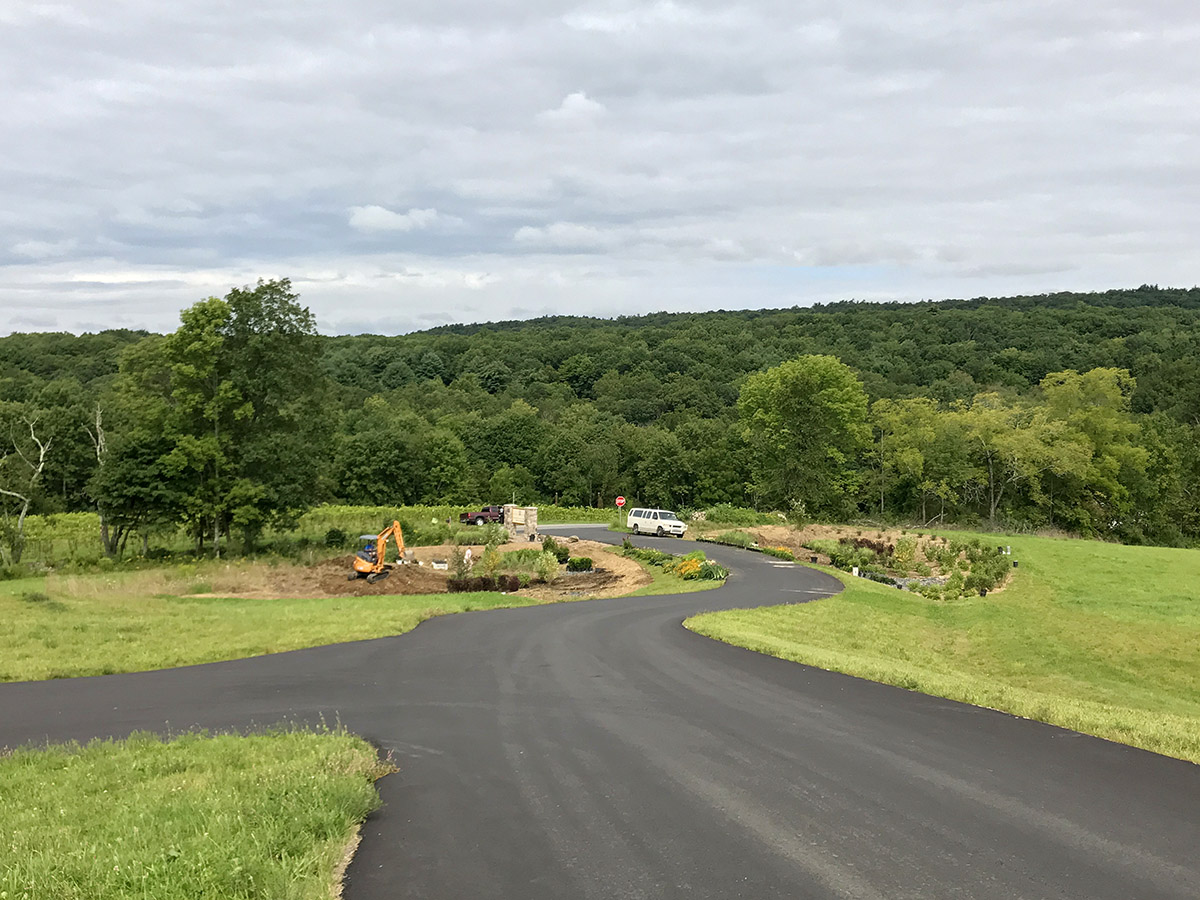
Managing Water Runoff – Protecting Streams
A rain garden is an earth-friendly water management system. The carefully selected plants absorb water that runs off of buildings and paved surfaces. The roots and soil filter any excess water.
Without a system to absorb and filter rain water, pollution and sediment wash into streams.
Scientists have found that rain gardens can cut down on the amount of pollution reaching creeks and streams by up to 30%!
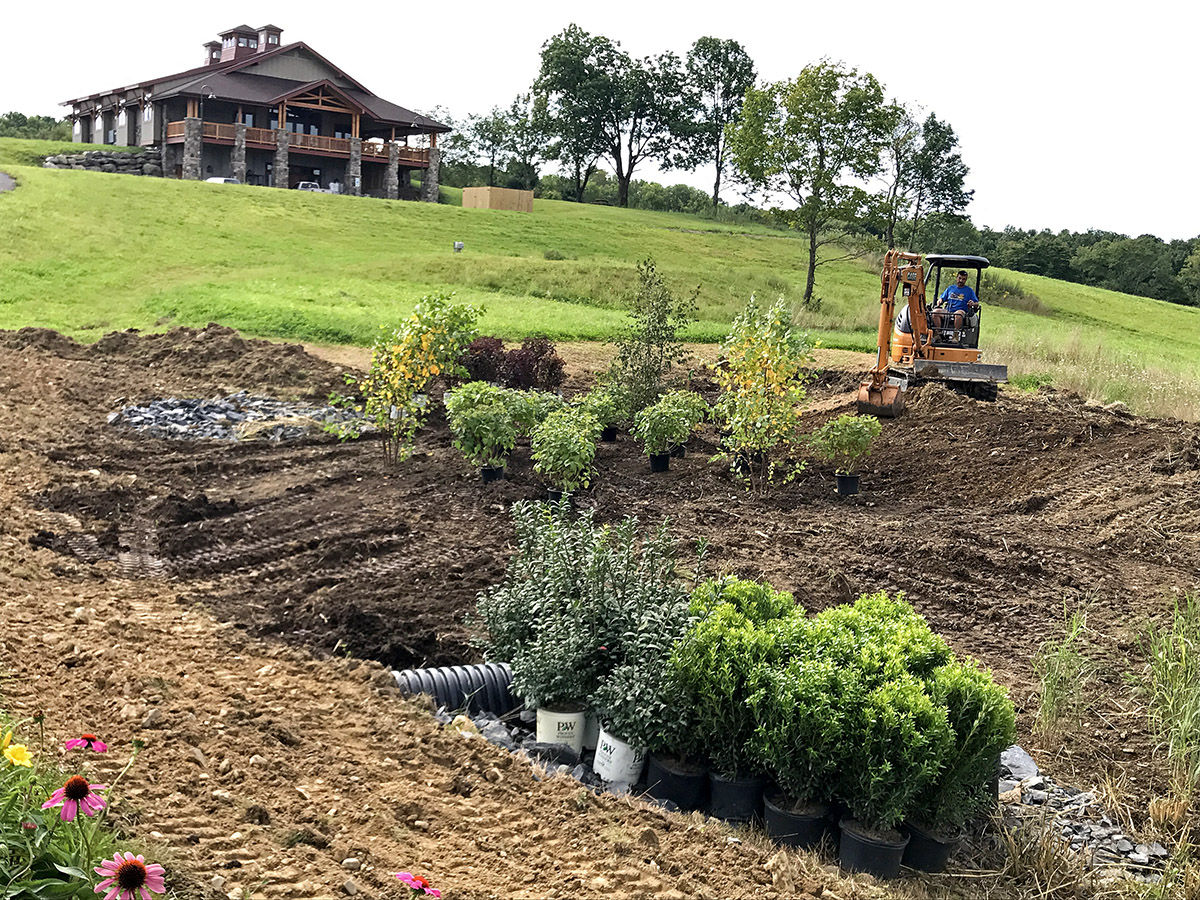
How Does it Work?
During the new winery construction, we had a hidden system put in around and under the driveway. It directs rain water into basins at the bottom of the hill.
We carefully selected 2,000 perennial flowers, 250 shrubs, and 8 trees to plant in the gardens.
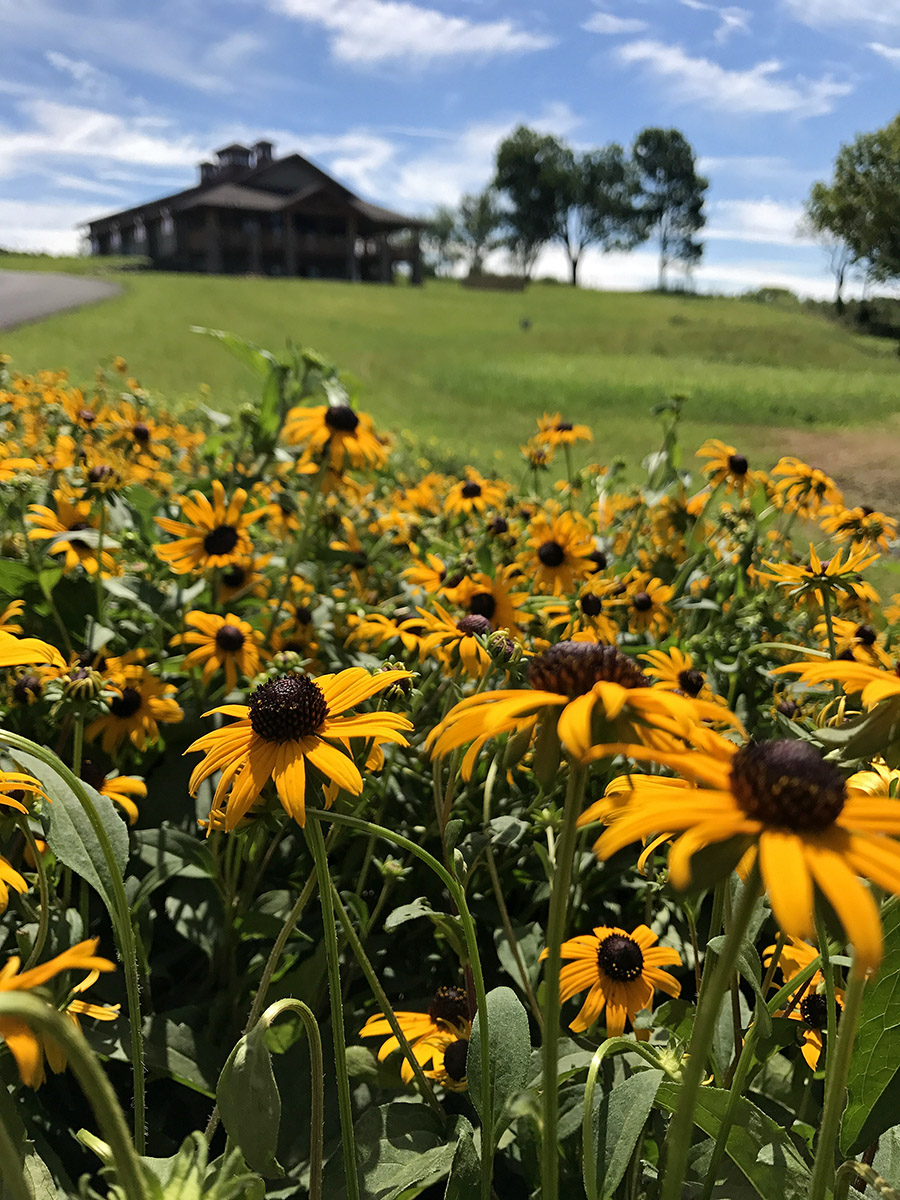
What Type of Plants do You Put in a Rain Garden?
Frank from Whispering Ridge Farm & Greenhouse in Snydersville led the project. He helped us choose which types of plants to use. There are three different tiers.
Tier One
The center of the basin is the lowest area that collects the most water. It includes thirsty plants with long roots. You’ll see ornamental grasses, birch trees and red twig dogwood there.
Tier Two
As you move up the basin, you’ll see plants that need less water, like burning bush and viburnum shrubs.
Tier Three
The flowers on the edge of the garden need the least water. We included mountain pinks, black eyed susans, cone flowers, and monarda. Not only are they helpful in absorbing excess water, they’re also beautiful and they attract bees. Yes! We are happy to bring bees to the vineyard. Scroll on to read about why.
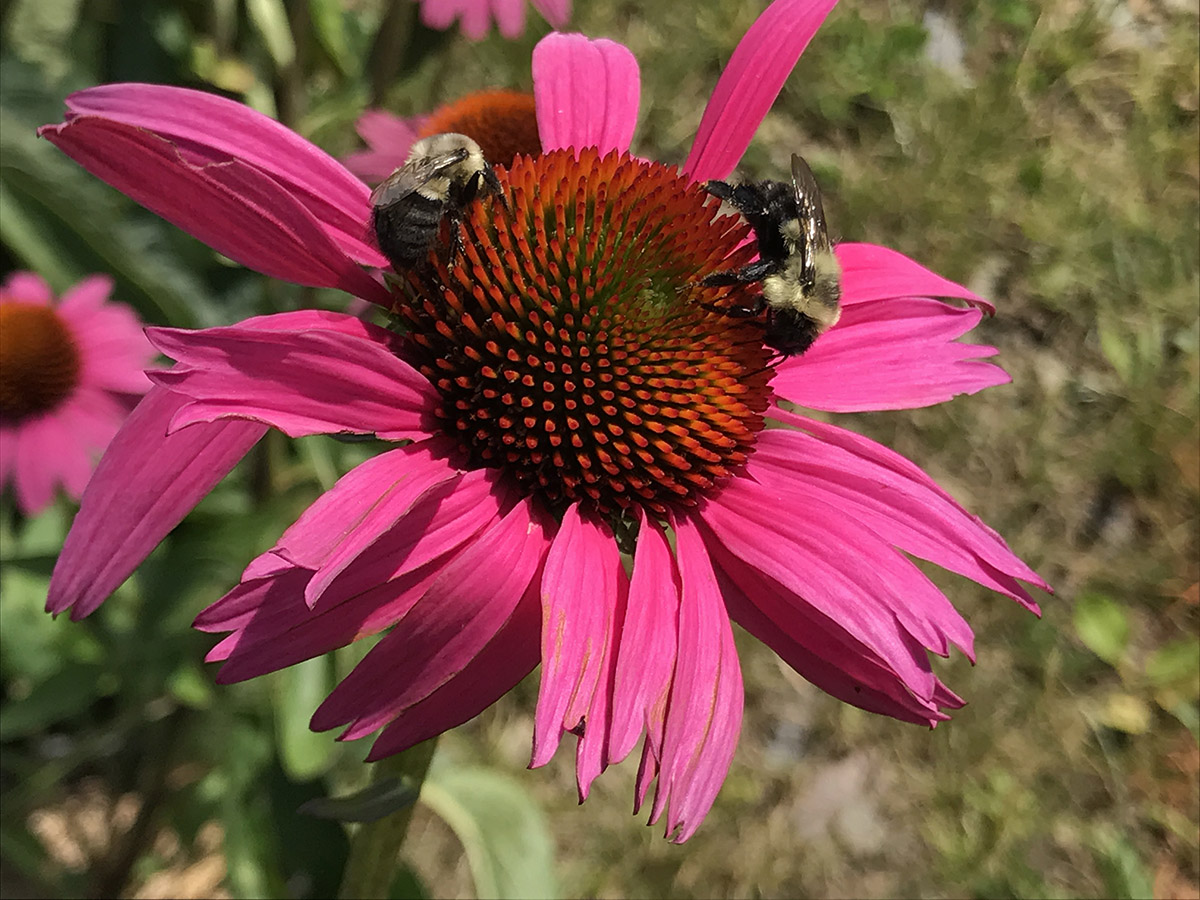
Extra Buzz – Rain Gardens Attract Pollinators
Another benefit to having rain gardens at the vineyard is that they attract attract pollinators. A bee shortage is jeopardizing farms across the country. Without pollinators we would all be extinct in five years.
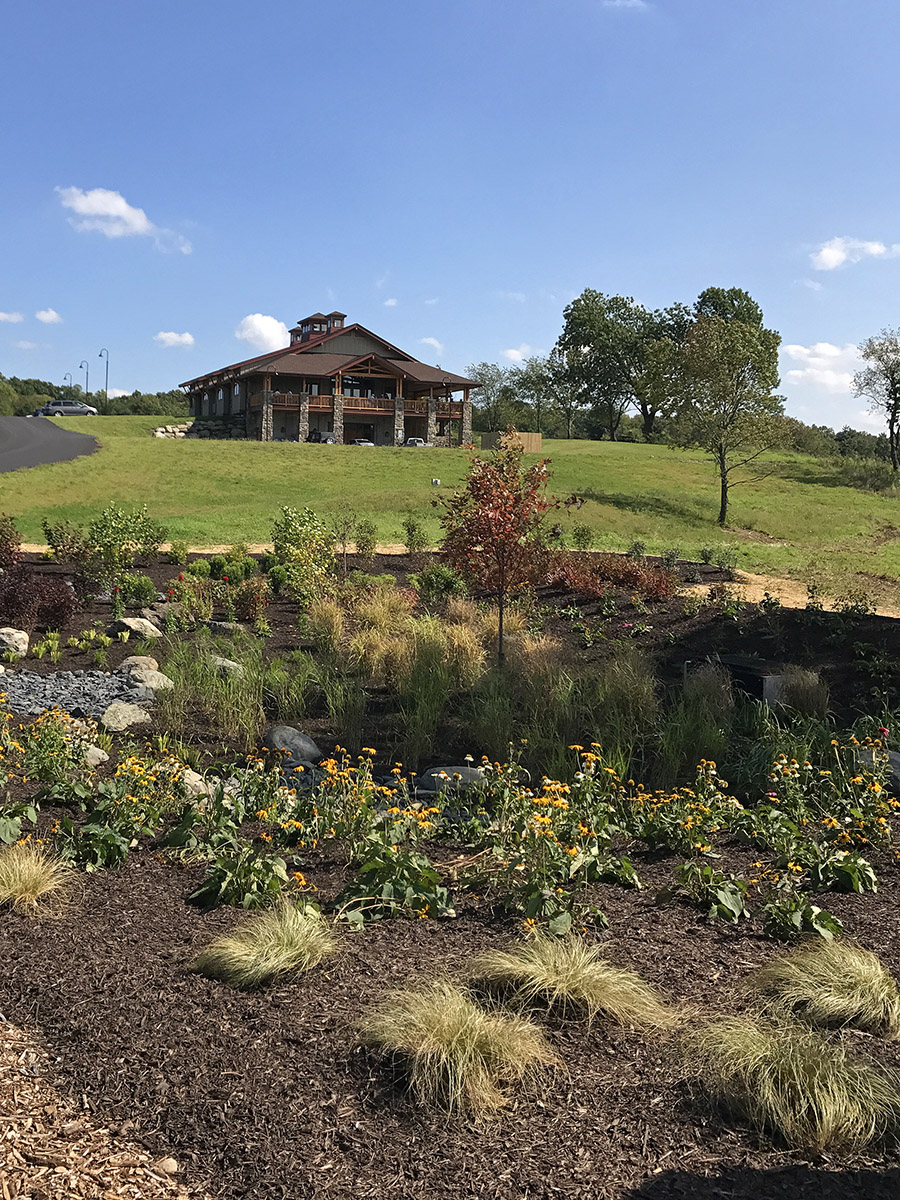
A Valuable Investment in the Earth
We invested tens of thousands of dollars in this project. It is so worth it because of our commitment to running a sustainable business.
It’s just amazing to look at the beautiful new gardens and know that that everything going on below the surface protects the earth. That makes them even more beautiful to us.
You can read more about our sustainable winery efforts in our blog posts about why we mulch our vineyards and how we get rid of Japanese Beetles.
If you have any questions about planting a rain garden in the Poconos or about building a sustainable business, you can leave us a message in the comment section.
Recent Blog Posts and Vineyard News
Check Out Our New Look!
March 31, 2020Homemade Hand Sanitizer
March 31, 2020Simple BBQ Sauce with Timeless
March 20, 2020Share this Post

